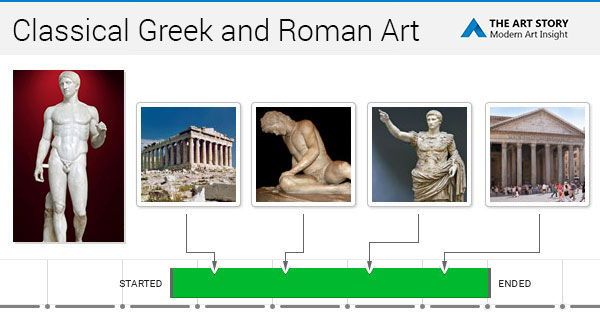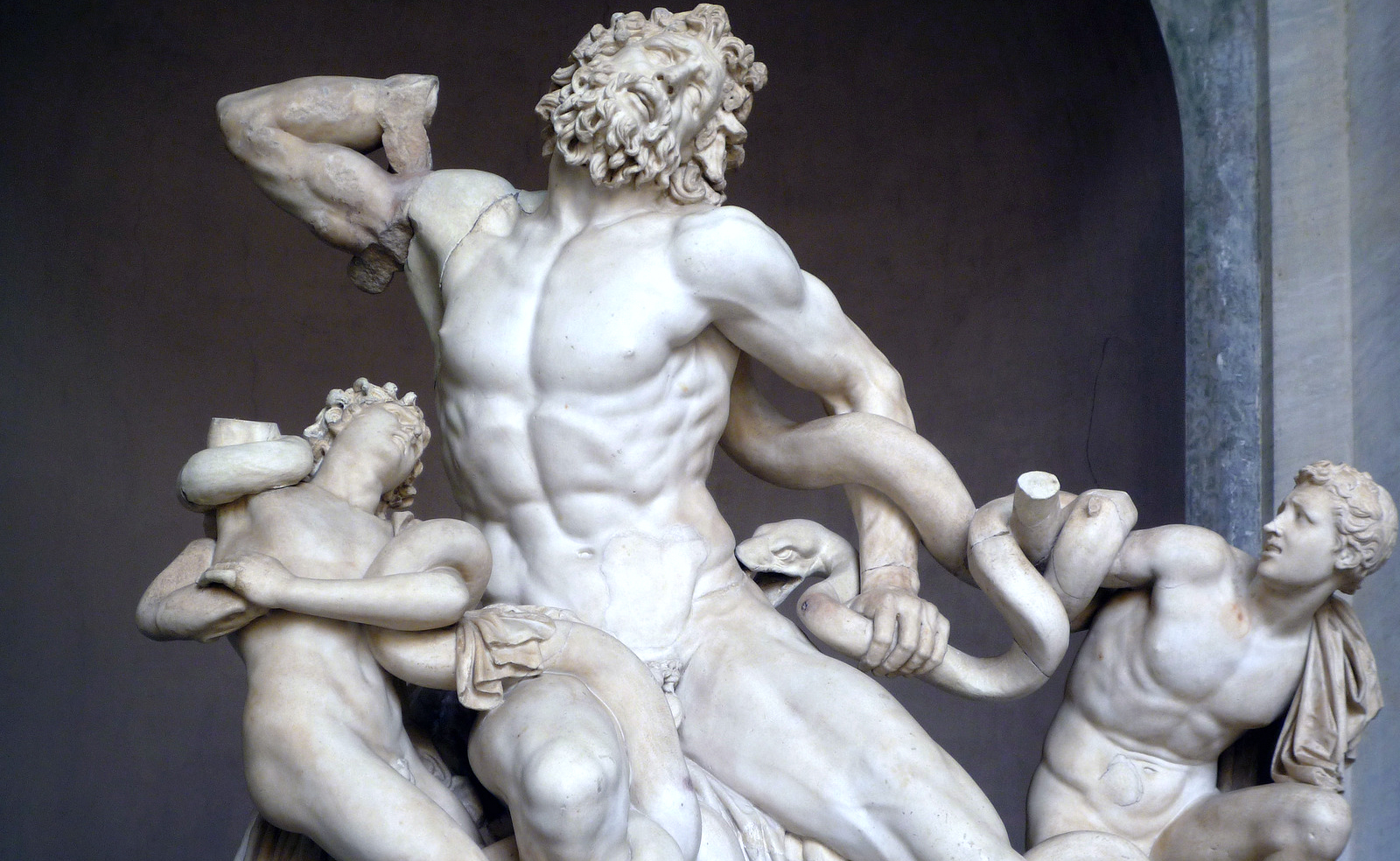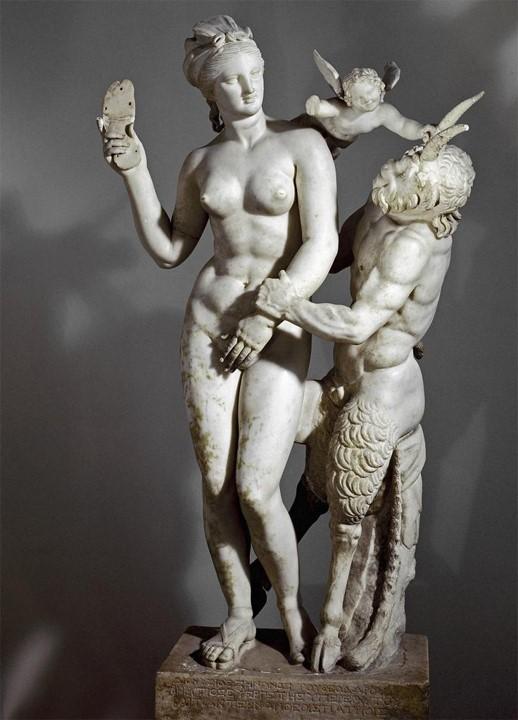Were Classical sculpture both naturalistic and idealistic. Look up Painted Greek Sculpture just to start and know that then as now every surface has a finish.

Classical Art And Architecture History Theartstory
A similar conflation can be found in the medium of classical sculpture which is both naturalistic and idealistic.

. Classical Greek sculptors were more imaginative because the Enlightenment released them from the dogma of the pharoahs. This sculpture and other reliefs of this time have influenced later artists like Auguste Rodin. Classical art that emphasized rational simplicity order and restrained emotion.
The Greeks idealized the human form because much of their art was a. Art that was both Naturalistic and idealistic. The origin of sculpture in Greek and Roman art can almost be divided into distinct categories- classical and idealistic vs naturalistic and emotional sculpture work.
Where Greek statues and sculptures depict calm ideal figures in the nude Roman sculpture is highly decorative and more concerned with realistic depictions of individualsThe Romans took many elements from Greek art but brought a more naturalistic. The Romans took many elements from Greek art but brought a more naturalistic and ostentatious style. In the visual arts such a tendency manifests itself constantly from time to time taking shape in concrete historical directions trends schools creative.
Roman artists typically made realistic portraits and sculptures. These relief sculptures are known for their dynamic movement and realism and decorated the temple chambers interior walls. Classical Roman art differed from classical Greek art because Roman art focused on realism while Greek art focused on idealism.
In Hegels analysis each style of art also had its paradigmatic art form. Ancient Greek sculpture represents a development from idealism to naturalism. Beckers post Kritios is the name of an Archaic and.
For Hegel Romantic Christian art was the high point of the history of art a history which he believed complete and closed. On the other hand much freedom could be seen in the Hellenistic art forms. Classical greek sculptures became increasingly naturalistic and began to show the body as alive and capable of movement while maintaining an interest in portraying the ideal human anatomy Greek Architecture.
From about 500 BC statues began to depict real. What was a fundamental difference between Greek classical sculpture and Greek Hellenistic sculpture. Beautiful natural looking images of men and idealized images of Gods.
An example of this is the bust of Pericles by Kresilas. The naturalism also idealism in art is a flow of about 1870 to 1890 in the broadest sense. Comment on Jeffrey A.
The Classical period saw changes in both the style and function of sculpture. The Greeks and Romans both represented gods and rulers in the form of statues a combination of religious and political influence. Access the answers to hundreds of Ancient Greek art questions that are explained in a way thats easy for you to understand.
Greek sculpture marked the height of Classical art and Romantic art grew with Christianity. 3 points QUESTION 25 1. The classical period characterized modifications in both the function and the style of the sculpture.
Art imitated the art of greeks but used a more naturalistic approach. The only materials available to the Egyptian sculptors were stones that had a very. The sculptures were generally polychrome except for works made in bronze.
True or false Classical sculpture was both naturalistic and idealistic. Classical Greek figures appear more relaxed than the rigid formal Egyptian and early Greek sculptural poses because _____. The Parthenon Marbles created by Phidias are perhaps the most famous examples of this style of Classical Greek sculpture.
Classical Greek sculpture is both naturalistic and idealistic. In the fallen warrior greece and the dying gaul roman copy both clearly represent a. The tendency to the most complete and absolutely accurate reflection of reality in all its manifestations details and details.
The sculpture of the Italian Renaissance comprises the approximate period between the late fourteenth and the early sixteenth century when Italian sculpture expressed a reaction against the aesthetic principles of Gothic and assimilating the influence of classical antiquity art humanism and rationalism developed a style that merged naturalistic and other idealistic elements into. The draped chlamys or traditional Greek cloak falls stiffly as is expected with archaic art. Ancient Greek sculpture of the Classical period depicts beauty through the balance of naturalism and idealism.
The scientific skill of Greek sculptors in showing. Whether deliberately applied. Classical Greek sculpture is both naturalistic and idealistic.
Defined by a careful observation of nature a new concern for the mechanics of the body and the pursuit of ideal forms Classical Greek sculpture represents a radical departure from the compact forms and upright poses of Archaic male nudes. Classical sculpture was both naturalistic and idealistic Government assembly halls The first Christian churches were patterned after basilicas used by he Romans as. Absolutely both in terms of composition and also of applique.
Symbolic art for example was found in ancient Egypt. Ancient Greek sculpture of the Classical period depicts beauty through the balance of naturalism and idealism. The High Classical Greek art was more idealistic and it showed how the Greeks wanted to be portrayed and the Hellenisic art is much more realistic.
Poses became more naturalistic see the Charioteer of Delphi for an example of the transition to more naturalistic sculpture and the technical skill of Greek sculptors in depicting the human form in a variety of poses greatly increased. Indeed John Boardman describes the work of Polyclitus Fig 2 a sculptor who canonized the male athletic body in classical period art as ideally realistic Boardman 157. In the Classical period this conflict reached an apotheosis when the two forces were balanced against each other.
Poses seemed more naturalistic as shown by the Polykleitos of Diadumenos sculpture. By signing up youll get thousands of step-by-step.

Greek Art Art History Teaching Resources

Form And Reality The Classical Greek Balance Of The Ideal And The Natural Disrecognized Space

Introduction To Ancient Greek Art Article Khan Academy

The Story Of Art Symbolism Idealism And Realism Carolyn Anderson Blog

Art History Midterm Flashcards Chegg Com

Roman Sculpture World History Encyclopedia

Classical Greek Sculpture Is Both Naturalistic And Idealistic True Or False Study Com
0 komentar
Posting Komentar